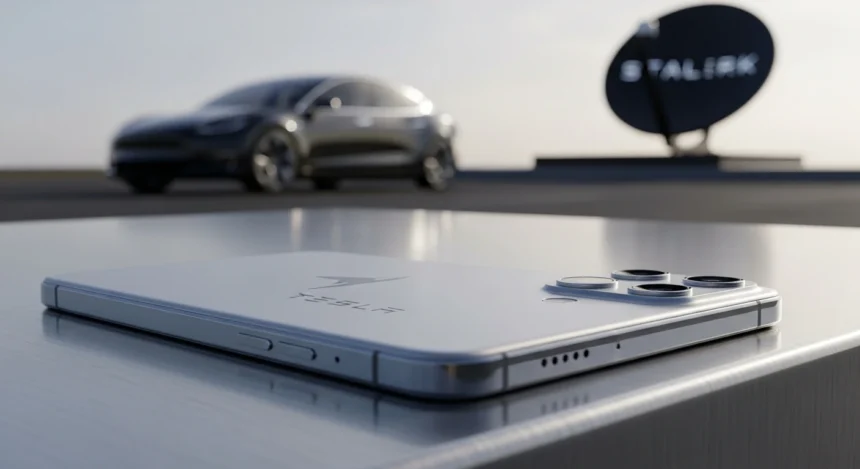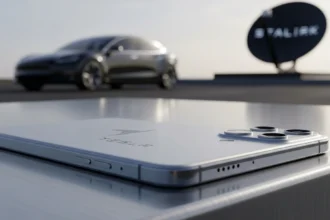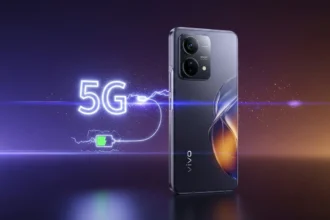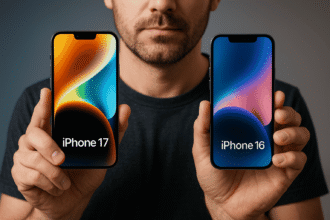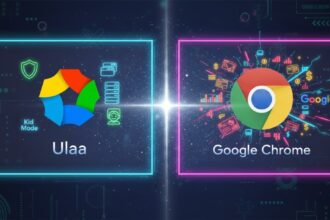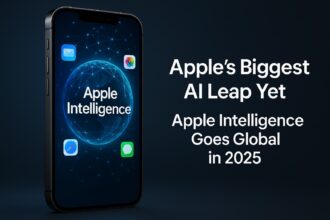What if your phone never lost signal — even in the middle of the desert? What if it could charge itself with sunlight, connect directly to satellites, and seamlessly control your Tesla car, your home, and even your Neuralink implant?
- The Birth of a Legend: Where the Tesla Phone Rumors Began
- Why a Tesla Phone Makes Sense
- Tesla Pi Phone 2025: Rumored Features (and What’s Realistic)
- The Starlink Connection: Tesla’s Secret Advantage
- Power, Performance, and Potential
- Why Tesla Might Not Build It (Yet)
- If It Launches, Here’s How It Could Change Everything
- The Most Likely Scenario
- Beyond the Hype: Why the Pi Phone Matters
- Final Thoughts
Welcome to the future — or at least, the future many believe Elon Musk is quietly building. The rumored Tesla Pi Phone 2025 has captured the imagination of millions. Whether it’s fact or fantasy, one thing is clear: if Musk does enter the smartphone arena, it could change everything.
The Birth of a Legend: Where the Tesla Phone Rumors Began
The first whispers of a “Tesla Pi Phone” started circulating a few years ago — concept designs, 3D renders, and “leaked” specs went viral across YouTube, Reddit, and tech blogs.
These mockups showed a futuristic device with a sleek metallic body, integrated solar panels, and a direct link to SpaceX’s Starlink satellites. Some even claimed it would mine cryptocurrency, link to Mars networks, and sync with Neuralink brain implants.
But here’s the truth: Tesla has never officially confirmed that a Pi Phone is in production. Still, Elon Musk’s history of defying expectations keeps the speculation alive. After all, he has transformed industries — from cars and rockets to energy and AI. Why not smartphones next?
Why a Tesla Phone Makes Sense
While no official plans have been announced, there are strong strategic reasons why a Tesla phone could become real.
1. Elon Musk’s Pattern of Disruption
Every time Musk enters a market, he overturns it. Cars, rockets, energy, and AI — all reimagined through Tesla, SpaceX, and xAI. A Tesla phone would fit that pattern of shaking up stagnant industries.
2. Deep Ecosystem Integration
Tesla owners already use their phones as digital car keys. Imagine if the Tesla Pi became the ultimate controller — syncing with Tesla vehicles, Powerwall batteries, Solar Roofs, and even your home automation system.
3. Starlink Connectivity
This is the most credible rumor. With SpaceX’s Starlink satellites, a Tesla phone could offer global coverage — no cell towers required. Imagine being connected anywhere on Earth, from deserts to mountains.
4. Freedom from Apple and Google
Elon Musk has publicly stated he dislikes the dominance of Apple and Google in mobile ecosystems. A Tesla phone could give him total control — his own hardware, software, and app ecosystem.
Tesla Pi Phone 2025: Rumored Features (and What’s Realistic)
| Feature | Description | Reality Check |
|---|---|---|
| Starlink Satellite Internet | Direct satellite connectivity for global signal | Highly plausible – SpaceX already working on direct-to-cell tech |
| Solar Charging | Built-in solar cells for passive charging | Possible for slow charging, but won’t replace fast charging |
| Neuralink Integration | Brain-interface controls for devices | Far-future concept, not ready for consumer release |
| Tesla Car Integration | Unlock, start, and manage Tesla cars with one tap | Already possible via app – deeper integration is realistic |
| Crypto Mining (MarsCoin) | Mine or manage crypto directly on phone | Unlikely – too power-intensive for a smartphone |
| AI-Powered OS | Tesla’s own intelligent assistant powered by xAI | Very possible, especially given Musk’s AI ventures |
In short: some features are grounded in existing technology (like Starlink and ecosystem control), while others are more science fiction than 2025 reality — at least for now.
The Starlink Connection: Tesla’s Secret Advantage
The strongest argument for a Tesla phone lies in SpaceX’s Starlink network.
Starlink already connects hundreds of thousands of users via low-orbit satellites, delivering internet to even the most remote locations.
In 2024, SpaceX started testing direct-to-device satellite connectivity, enabling standard phones to connect without cell towers.
If that technology scales, it could allow the Tesla Pi Phone to operate anywhere — from rural farms to Mars missions.
That’s more than a smartphone feature — it’s a communication revolution.
Power, Performance, and Potential
The Pi Phone would likely feature:
- A custom Tesla processor optimized for AI and energy efficiency
- Supercharging compatible with Tesla’s charging ecosystem
- Advanced cameras leveraging Tesla’s computer vision expertise
- Solar trickle charging for emergency power
- Encrypted biometric security (possibly face and neural pattern recognition)
Paired with Musk’s AI firm, xAI, it could feature a personal assistant rivaling Siri or ChatGPT — deeply personalized, privacy-focused, and integrated across Tesla platforms.
Why Tesla Might Not Build It (Yet)
There are also strong reasons why Musk may avoid the smartphone race for now:
- Market Saturation – Apple, Samsung, and Google already dominate. Competing head-on is expensive and risky.
- Focus on Core Missions – Tesla is investing heavily in AI, robotics, and autonomous vehicles. A phone could distract from those priorities.
- Supply Chain Complexity – Phones require massive global production capacity, quality control, and customer support.
- Regulatory Barriers – Direct satellite connectivity must meet strict telecom regulations worldwide.
So, while the vision is inspiring, it may remain on the horizon until Starlink’s technology and Tesla’s software maturity align.
If It Launches, Here’s How It Could Change Everything
If Elon Musk does release the Tesla Pi Phone 2025, the ripple effects could be enormous:
- Telecom Disruption: Satellite-based networks could challenge traditional carriers and tower operators.
- Ecosystem Shift: Apple’s “walled garden” may face its first real competitor in ecosystem control.
- Global Connectivity: Remote communities could finally access high-speed internet directly via mobile.
- Consumer Empowerment: Users gain independence from carriers and big tech middlemen.
In other words, Tesla wouldn’t just be launching a smartphone — it would be launching a new kind of internet.
The Most Likely Scenario
Most experts believe Tesla will not release a standalone phone in 2025.
Instead, Musk’s companies are likely focusing on embedding Starlink chips into future devices — enabling satellite connectivity for existing smartphones.
That approach aligns with Tesla’s long-term vision: expanding infrastructure first, then products later.
Still, if consumer or political pressures grow (for example, if Apple or Google restrict Tesla services), Musk could fast-track a Pi Phone as a strategic counterstrike.
Beyond the Hype: Why the Pi Phone Matters
Even if the Tesla Pi Phone never launches, its symbolism matters.
It represents the next frontier of human connectivity — a world where our cars, homes, and devices are part of one seamless digital ecosystem.
Whether that system is built by Tesla, SpaceX, or another company, one truth remains:
The future of communication won’t depend on towers or cables. It’ll be written in the stars.
Final Thoughts
The Tesla Pi Phone 2025 may still be a rumor, but the technologies behind it — Starlink satellites, AI integration, sustainable charging, and ecosystem control — are very real.
And if anyone can make the impossible real, it’s Elon Musk.
He turned electric cars from a fantasy into the norm. He made rockets reusable. He brought internet to mountaintops.
So maybe, just maybe, the Tesla Pi Phone is the next big leap — connecting us not just to the internet, but to the future itself.

